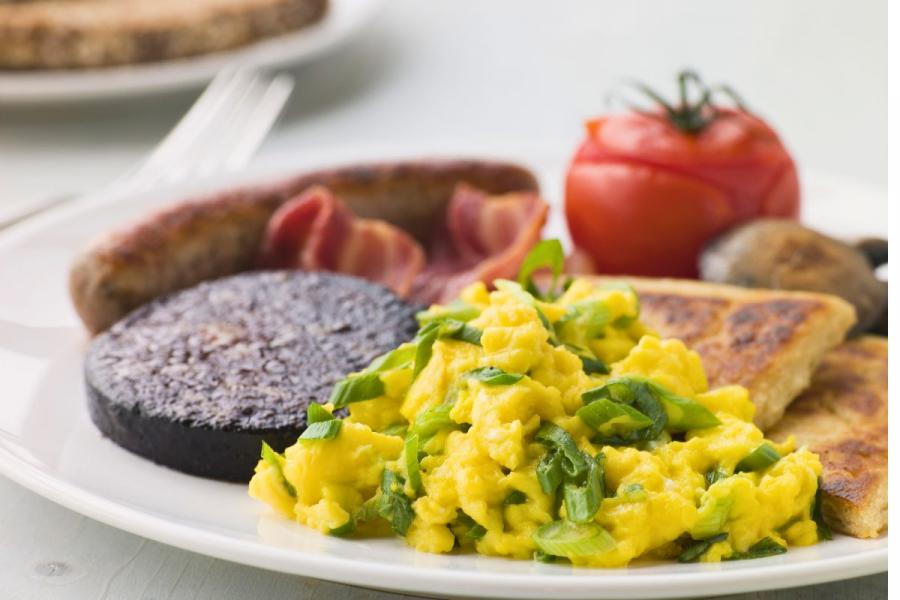Food in Ireland
If you’ve ever had traditional Irish food, you’ll know that it’s made from inexpensive, simple ingredients and there is a “no waste” approach to food. This comes from a long tradition and history of poverty for a large portion of the population. Of course, Ireland has come a long way and times have changed, but the traditional meals are still grounded in this long, rich history.
Irish Food Traditions and Where They Come From
One glance at a true Irish recipe and you’ll see that there are often only a few ingredients. Few seasonings are used, with salt and pepper being the most common. Common recipe ingredients include potatoes, cabbage, bacon, beef, lamb, bread and other vegetables, but note that beef, lamb and other pork are more recent additions. Potatoes, of course, were the main staple of the poor Irish diet for a very long time.
Not only is there a focus on keeping things simple with food, but there is also an emphasis on ensuring everything is eaten. For example, pigs are common livestock in Ireland and the Irish use everything. From the crubeens (pig’s feet) and tripe (stomach), all the way to drisheen (blood sausage), nothing is wasted.
There are a number of common traditional meals in Ireland, but you might be surprised to learn that corned beef isn’t included in them. While many think that corned beef is a traditional Irish food and it was an important export for a few centuries, it was not commonly served at the Irish table as beef was an expensive meat that many could not afford.
Here are a few traditional foods you may, or may not, recognize:
- Irish potato soup: A milk and stock-based soup, its main ingredients are potatoes and onions.
- Irish Breakfast: This very hearty breakfast meal is served with bacon, sausage, blood sausage, white (oatmeal) pudding, vegetables and bread.
- Colcannon: A creamy dish made with mashed potatoes and cabbage or kale, with a little bacon thrown in too.
- Boxty: A potato pancake, made with grated and mashed potato, pan-fried in oil.
- Irish Stew: The traditional version includes mutton, potatoes and onions. However, more modern versions add other vegetables and meats.
- Bacon and cabbage: Boiled cabbage, bacon and onion are sweetened with brown sugar for a very satisfying meal.
Many recount the Irish approach to food after the Great Famine as being just as a means of sustenance, rather than for enjoyment. They also give credit to Myrtle Allen to expanding the country’s interest in food in the 1990s. She started as a cookery correspondent to the Irish Farmers Journal and then the family opened a restaurant Ballymaloe House and farm that exposed Ireland to new European methods of cooking. Along with her daughter-in-law, Darina O’Connell, she opened the Ballymaloe Cookery School and the ideas spread, changing the face of the way the Irish ate.
Today, there are many restaurants and international foods are quite common, but the traditions still thrive and are grounded in a long, rich history.
Potatoes in Irish history
Even if you’re not very familiar with Irish history, you’ve probably heard something about the importance of potatoes in the lives of the Irish. Calling potatoes important is no understatement, and understanding the history helps us get a complete picture of their culinary and cultural importance even today.
The potato was introduced to Ireland in the late 1500s. Believed to be brought back to Europe by Spanish conquerors in South America, they were an attractive crop because of their vitamin, mineral, protein and carbohydrate content. Interestingly enough, humans can actually subsist on potatoes and for quite some time in Ireland, the Catholic poor actually did. In fact, during much of this time, peasants who lived on potatoes were believed to be healthier than the rich, whose food staple was bread.
Potatoes had another attractive benefit to the Catholic poor as they provide a large yield, even when grown in small areas. This was crucial because Penal Laws were introduced to Ireland in the 1660s, placing many restrictions on Catholics living there. Things continued to grow worse, and in the 1660s, the law actually prohibited Roman Catholics from buying land or passing on any land they owned to their heirs. The law was eventually repealed, but with great restrictions, and the next century essentially saw those laws back in full swing, placing the Catholic majority in a very difficult position.
Catholics were now at the mercy of Protestant middlemen to rent them some land. They were crowded into small parcels, faced with the challenge of providing themselves with adequate sustenance. Add to that, the large growth of the Irish population made the potato a crucial element of survival during this period.
Because of the reliance on the potato, the Irish were vulnerable if harvests were poor. That’s exactly what happened in 1740 when cold and wet weather led to the Irish Famine that lasted until 1741. Just over a century later, in 1845, the Great Irish Famine saw potato crops destroyed by a disease called potato blight. During the 7-year famine, it is estimated that 1 million Irish died and another million fled the country. It was a devastating time, and as the country eventually recovered, the potato continued to be Ireland’s staple crop.
Even today, potatoes are still an important part of the Irish diet. They appear in stews, soups, bread and other specialty dishes, such as Irish potato cakes called boxty, and colcannon, a cabbage and potato dish. The potato also has a prominent place in culture as it is included in the names of places, literature and art. If you ever travel to Ireland and are treated to some good traditional Irish cuisine, you’ll see that the potato is an essential ingredient to its hearty meals.
Discover international food and wine a recipe at a time. Explore other countries and travel around the world from the comfort of your own home.

